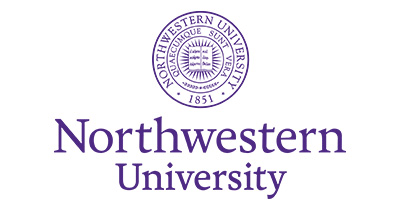In his ode “To Autumn,” Keats personifies the season as a goddess presiding over the harvest’s fruit, nuts, grains, honey, flowers; like a gleaner with a load of grain on her head, she steps carefully over a brook, “Or by a cyder-press, with patient look, / Thou watchest the last oozings hours by hours.” The nostalgia in this poem for a season that seems to have already passed is enacted subtly in that the apples that were still on the trees in stanza one are by stanza two not there any longer–they’re in the cider press. Nostalgia, the longing for a feeling of home, even if not the place of one’s own real home, is the mood of much Romantic poetry. I have felt it, and still do, for places that were never my home, as when I recall now that my father, who spoke very little of his childhood on a small, poor, Mississippi farm, told once or twice of how when the family harvested their sugar cane they loaded it on a wagon pulled by mules (the one whose name I learned Spencer) and took it over to a neighbor a half mile away. The neighbor had a cane press, also powered by a mule, this one harnessed to a long pole and walking round in a circle. And as the heavy rollers crushed the juice from the cane, the boy who would become my father would hold a jar at the side of the press to catch dripping juice and would drink it down.
“You couldn’t drink too much of that at a time,” said my Uncle Mack, “it was so sweet.” I called him once to ask about that little cane press. Mack told me that the Gibbons cane patch was enough to produce several big loads of the ten-foot-tall cane for their wagon, which was pulled by a two-mule team; in turn, the pressed cane yielded enough juice, which the family hauled back home, to boil down to two to three hundred gallons of molasses, which they put in one-gallon buckets and sold. That is a lot of labor.
Keats (1795-1821), a young man of the urban working class, was apprenticed in medicine and then pharmacy from the age of 14, having been taught until that time by a literary schoolmaster—a man who was his mentor in later years. Keats did not have equal advantages of birth, legacy, education, or connections, compared to those of the other major Romantic poets; and perhaps with better physical constitutions than his, they also outlived him (even Shelley, who drowned shortly before he would have turned 30, and Byron, who had ten years more than Keats, before dying of illness).
Did Keats wish not to draw too much attention to his own origins?—which were above those of field laborers but nevertheless weren’t privileged. It has always struck me that Keats wrote a poem to an imagined goddess of the harvest and put not a single human being into it. (John Clare, the other odd man out, in terms of social class, among the Romantics, and far less privileged even than Keats, wrote many poems that evoke grain fields and physical labor.) Keats’s harvest has no reapers, pickers, or gleaners, no children snatching up scattered nuts or a half-crushed apple or holding a tin cup to the side of the cider press. As for Autumn, Keats in a way substitutes her for the real laborers, even though as a goddess she will suffer no damage, as they do from their lifetime of exertion: “And sometimes like a gleaner thou dost keep / Steady thy laden head across a brook“—as with her head piled with gleaned grain a woman steps carefully across a stream on her way back to the barn or to… a word that suddenly comes back to me—the byre.
But I’m thinking of the wrong word, since when I look up “byre” I see it means a barn for cattle, not a granary. Grain has to be winnowed (Keats mentions that in the same stanza, but no one is actually doing it) and has to be put in sacks and stored for seed or sold or carried to a mill for grinding…. For “byre,” the Indo-European root word is bheu-. “To be, exist, grow” (American Heritage Dictionary of Indo-European Roots). This root word has had an wonderful range of progeny in English. “BYRE, from Old English byre, stall, hut, from Germanic *burjam, dwelling.” (Whereas “barn” comes from another root and means a place for keeping barley.) Ultimately, as the meanings of derivatives have proliferated through various languages and come into English, and then developed within English, bheu- produced BE, FOREBEAR, BONDAGE, HUSBAND, BOOTH, BUILD, FUTURE , BOWER, BYLAW, BEAM, BOOM, and BUMPKIN (a partial list). To be is to have forebears, and with luck, a future; it is at its best to husband resources, to be free of bondage, to build spaces for safekeeping, to establish rules of fair treatment, to use trees and to suffer bumpkins. Many a word brings with it a tiny history of human beings and our conflicts, purposes, desires, and fate. (For words in other languages that derive from bheu-, see root #146, athttp://www.utexas.edu/cola/centers/lrc/ielex/X/P0249.html, where an expanding lexicon of Indo-European roots is being built, based on the foundational work of Julius Pokorny in the first half of the twentieth century.)
The sugarcane juice in Mississippi ran from the press till the work was done, the wagon mules stood impassively after the last load of cane, the last oozings drip. Keats’s poem opens an inner space into which pour recollections, associations, word histories, human stories, because it is a space of inner life and of time lived in the imagination.
History itself pours in, too—here, especially in BONDAGE. The slaves who worked the cane fields in the US and the Caribbean were mercilessly expended, did hot, horrible, dangerous work with sharp blades on swampy ground. New Orleans, which despite an arbitrary state borderline is in fact the principal city of both Louisiana and Mississippi, was in the nineteenth century the capital of cane sugar. (The brutal labor of cane field workers is oppressive to this day; in Africa, to the hard work of tending the crop is added the terrible poverty of workers and the danger of the frightening, fatally venomous black mamba snakes that drape themselves in the top leaves of the thickly growing cane, with which owners have replaced their natural habitat; in the cane leaves, the snakes are hard to see till it’s too late to avoid one.) Britain abolished the slave trade in 1807; Spain in 1820. It seems that where sugar cane went, there went slavery–from Haiti after its revolution to the American south and to Cuba…
Keats’ autumn, though, shows no trace of that; instead it celebrates harvest at a temperate latitude. And at a time when the consumption of sugar was nothing like what it would become, fruit–not sugar–is what’s sweet, the “sweet kernel” belongs to a nut, and bees and flowers imply sweetness, as does the cider-press. My Northwestern colleague Emily Rohrbach told me once that Leigh Hunt called Keats by the nickname “junkets,” because this is what Keats’s Cockney pronunciation of his name sounded like to Hunt (See the photo of Keats’s signature, above). It seems Keats did not at all like the nickname; “junkets” is the name of a sweet milk pudding. And Keats had a sweet tooth–the sweet tastes in his ode to autumn are not the only trace of sugar in his work: Emily sent me to look at “The Eve of St. Agnes.” There I found Keats naming many “cates [sic] and dainties” (line 173): “candied apple, quince, and plum, and gourd; / With jellies soother than the creamy curd, / And lucent syrups, tinct with cinnamon; Manna and dates” (lines 265-68; “soother” means “softer” or “smoother”). (That “creamy curd” would be, I suppose, a “junket.” Anyway, the two lovers of the poem do not pause to taste these sweets, which are merely figures for the sweetness of Madeline and of love itself; they escape the violence and darkness that make up anti-love.)
Nor is there any question that Keats had the sweetest tooth for words of any poet in English, savoring the rich compound of syllables he could concoct (in Cockney, whatever it sounded like in his time). In one rhyme sequence, he enacts a progress of action and thought: “thy hook [i.e. scythe] / Spares the next swath and all its twinéd flowers: / And sometimes like a gleaner thou dost keep / Steady thy laden head across a brook; / Or by a cyden-press, with patient look, / Thou watchest the last oozings hours by hours.“ The hook is the tool of perhaps the hardest labor of the harvest, scything the grain all day—mens’ work; the brook is a physical obstacle to carrying in the last of the grain—what has been gleaned by women after the sheaves have been bundled in the field and loaded on a wagon; the look is a passive taking in—evidently in a daze (which can’t, in the case of the goddess, be from physical exhaustion)—of a slow, late, perhaps inconsequential dripping of apple juice from the press, “hours by hours.”
The last stanza of the poem is about sounds and sights; the eyes of the reader rise with those of the poet up to the clouds, then gaze across the stubble-fields, and down to the river; all that lives is mild and sweet. That work is done. The invisible laborers are at rest, we hope.
(This is a slight revision of an earlier post.)

